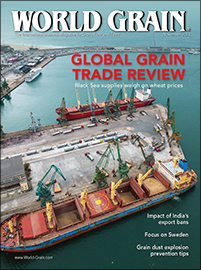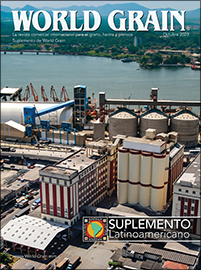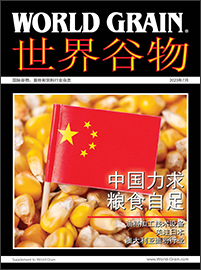DENVER, COLORADO, US — High interest rates and a strong US dollar are taking a disproportionate toll on rural industries, including agriculture, as US exports are more expensive and imports cheaper, according to a quarterly report from CoBank’s Knowledge Exchange.
“The challenge for agriculture and other rural industries that rely heavily on global markets is their export partners simply can’t afford to buy US products,” said Rob Fox, director of CoBank’s Knowledge Exchange. “When you combine the loss of exports with a general slowdown in the US economy, it’s a double whammy for many businesses operating in rural America.”
The disruptive geopolitical and economic events in recent years resulted in the historically irregular situation where commodity prices and the dollar were moving upward in tandem, CoBank said. But those events are now fading as market drivers. The fundamental inverse relationship between the broad array of commodities and the dollar has largely returned.
Historically low water levels on the Mississippi River are limiting grain movement heading into peak fall harvest season. Higher barge rates on the river are pressuring interior basis values for corn and soybeans. The combination of a strong US dollar and robust export competition from Brazil and Russia are creating major headwinds for the US grain and oilseed export program.
Exports to China are down nearly 65% year-over-year, CoBank said, due to the higher shipping rates, strength in the dollar, competitive offerings in South America and political issues.
Soybean export sales are also sluggish with the absence of Chinese demand. Total outstanding sales at the start of the new crop year are down 36% year-over-year and Chinese sales are down 48%.
Winter wheat planting is underway in the United States with acreage expected to be down slightly as prices languish below expected breakeven costs of production. Demand faces strong headwinds from record Russian exports and an ample supply of corn competing for feed usage, CoBank said.
Fuel ethanol production was very strong during the third quarter, averaging 16.1 billion gallons compared to 15.4 billion during the second quarter of 2023. A strong summer travel season and attractive fuel ethanol prices were the key demand drivers. Profitability was also favorable, exceeding 50 cents per gallon vs. 20 cents per gallon in the year ago period.
Continued steady demand and tight ethanol stocks should support fuel ethanol prices in the fourth quarter. And with corn exports still running behind average levels (exacerbated by low Mississippi River water levels), feedstock availability should also be favorable for ethanol producers in the near-term, CoBank said.
Renewable diesel and other biofuel capacity continues to grow, having increased by 26% or 800 million gallons since January 2023.
India’s export ban on white rice shocked world rice markets in July. Asian rice prices quickly climbed to a 12-year high. World buyers raced to secure supplies from other major exporters like Thailand, Vietnam and Pakistan. However, the price response in the United States has been muted with domestic rice production making a major recovery from last year’s small harvest. With much of India’s exportable rice inventory now offline, new export business has materialized for US exporters.




